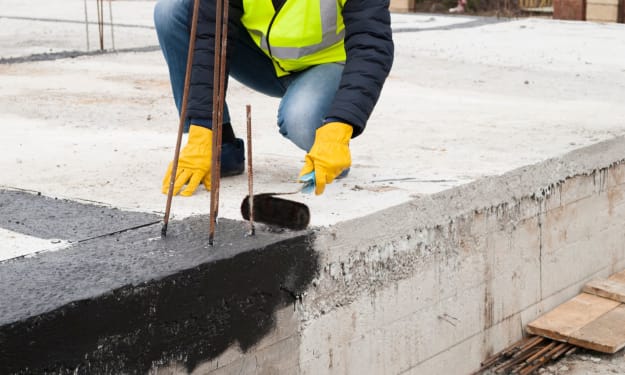Methods of Preventing Dampness on Concrete Floors
Chemical Companies In India

Concrete floor dampening is a common problem that happens in many structures. Even the concrete slabs are porous to some extent, making them sensitive to moisture from a variety of sources. It can happen for a variety of causes, but one of the most prevalent is when the moisture level in the building is too high, causing it to spread to the floor layer from beneath the structure. Obviously, this is where the waterproofing products come into play. To properly address any problem, it is necessary to first understand the root cause.
Dampness in a building can be caused by poor design, shoddy construction, or the use of low-quality materials. Dampness not only shortens the life of a structure, but it also makes crucial items of labour in the construction of a structure unsanitary. Water proofing is the process of preventing water from leaking through the roof, whereas damp proofing is the process of keeping the walls, floors, and basement dry. However, the same waterproofing chemicals work the same way for the both the purposes.
What might cause the dampness on concrete floor?
• Dampness can seep through the foundation walls. Capillary action causes moisture from damp ground to ascend considerably above ground level.
• Dampness can also be caused by rainwater that rebounds after hitting the wall surface.
• Rainwater may penetrate exposed tops of walls, parapets, compound walls, and other structures, causing dampness.
• In the case of flat roofs, inappropriate rainwater pipe connections, insufficient roof slopes, and a faulty junction between the roof slab and the parapet wall can be sources of dampness.
• Rainwater may seep through a poor roof covering on sloped rooftops. Furthermore, a poor eaves course and eave or valley gutters may allow rain water to pass through the top supporting wall, resulting in dampness.
Thus, what appears from the causes, if the building or structure is located in areas with heavy rainfall it is a must to use the right method and waterproofing products to prevent any possible damage.
Methods to prevent dampness in structures:
1. Membrane damp proofing
This method entails placing layers of water-repellent membrane between the source of dampness and the component of the construction that is near to it. Depending upon the source of dampness, the damp proof course (DPC) may be provided horizontally or vertically in floors, walls, etc.
2. Integral damp proofing
In this method to increase the permeability of the concrete mix, different water proofing chemicals are added to it. Such waterproofing products are easily available in powdered and liquid versions on the market. he quantity of water proofing compounds to be added to cement depends upon manufacturers’ recommendations. In general, one kg of water proofing compound is added with one bag of cement to render the mortar or concrete waterproof.
3. Surface treatment
The purpose of surface treatment is to fill the pores of moist surfaces. Water repellent metallic soaps, such as calcium and aluminium oleates and stearates, are extremely effective in protecting buildings from the effects of heavy rain.
4. Guniting
This entails applying an impenetrable coating of rich cement mortar to the waterproofed surface. The operation is carried out with the aid of a cement gun machine. Because the substance is placed under pressure, it promotes dense compaction and improved adhesion of the rich cement mortar, resulting in a waterproof treated surface.
The methods applied are based on the structure and dampening cause. However, to make sure the structures are proofed aging water leakage and seeping weel, the optimum quality waterproofing chemicals are a must. The waterproofing products by Mapei are one among the best in providing assurance with a range of option based on the method and site requirement.





Comments
There are no comments for this story
Be the first to respond and start the conversation.